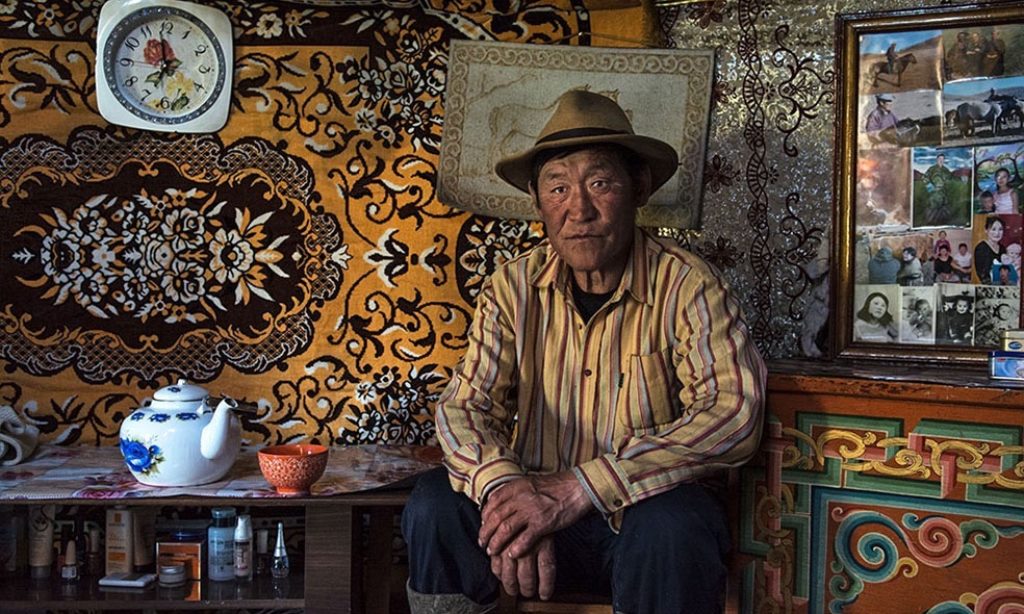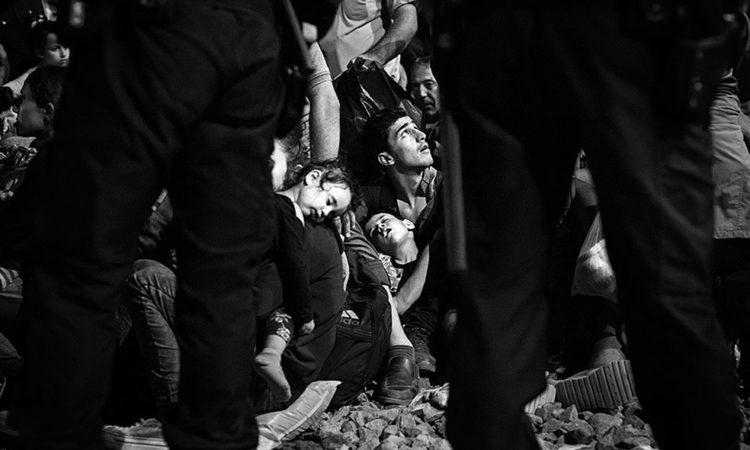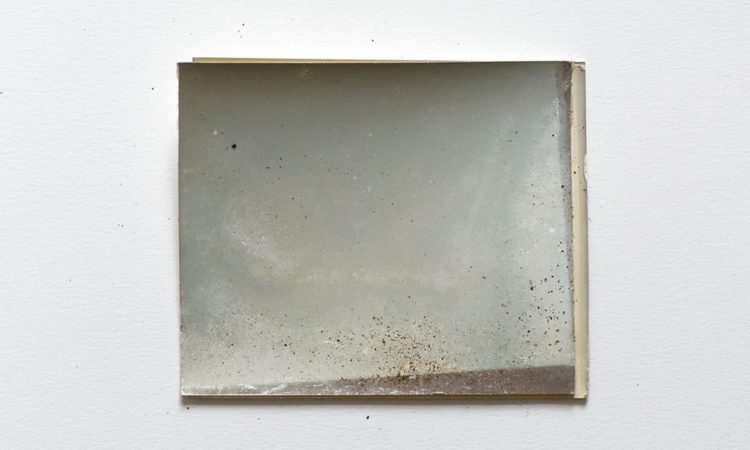Silence is the protagonist of the boundless spaces that cross the horizon, an enveloping presence that forces one to look within and confront the reasons for a nature that prevails solemnly. The nomadic peoples of Mongolia live in perfect harmony with the earth and nature, far from the idea of domination and alteration, but aware that only balance and respect allow life and prosperity.
The shamanism of the distant past has left its profound legacy on this people, with a reserved, resigned and yet stubborn character, rich in a spirituality that manifests itself in forms and rituals handed down for centuries. A personality similar to the steppes remained unaltered over time, harsh and fascinating.
There are two essential elements of a family: the Gher, a transportable house with which to move according to the course of the seasons, and the cattle that provides all that is necessary. And it is the horse the most loved animal, the one who allows to face the steppes, to cross the vast territory, as when centuries ago the Mongol warriors following Genghis Khan succeeded in creating their vast empire.
In the hard life of these environments, work is never lacking to guarantee the subsistence of the family and women have roles of great responsibility. Those who choose these territories can not do without their deepest traditions, to perpetuate the value of the family and ancestors, despite the current attractions of work in the city. And we return to the almost metaphysical idea of the territory lived with spirituality, symbolized by a horse that runs towards the infinite and expresses in a word the integral and proud soul of the Mongolian nomads: freedom.
Michele Martinelli – documentary photographer focused mainly on anthropological and environmental issues.
Website: michelemartinellifotografia.com

At the edge of a paved road, a sign with an arrow indicates a small locality, but in reality, following that direction, one enters ancient lands where deep-rooted traditions are found. © Michele Martinelli
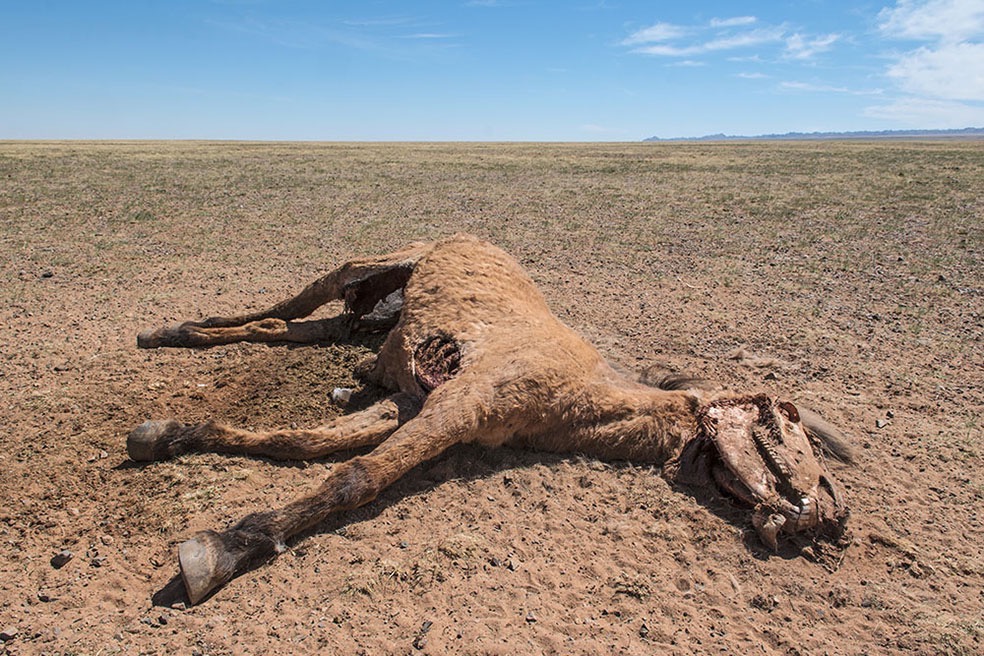
Mongolia, the Gobi Desert, Mongolian winters with harsh temperatures and food scarcity test the resistance of animals. With the arrival of spring the carcasses of the victims resurface from the desolate desert landscape as if they had been mummified. © Michele Martinelli
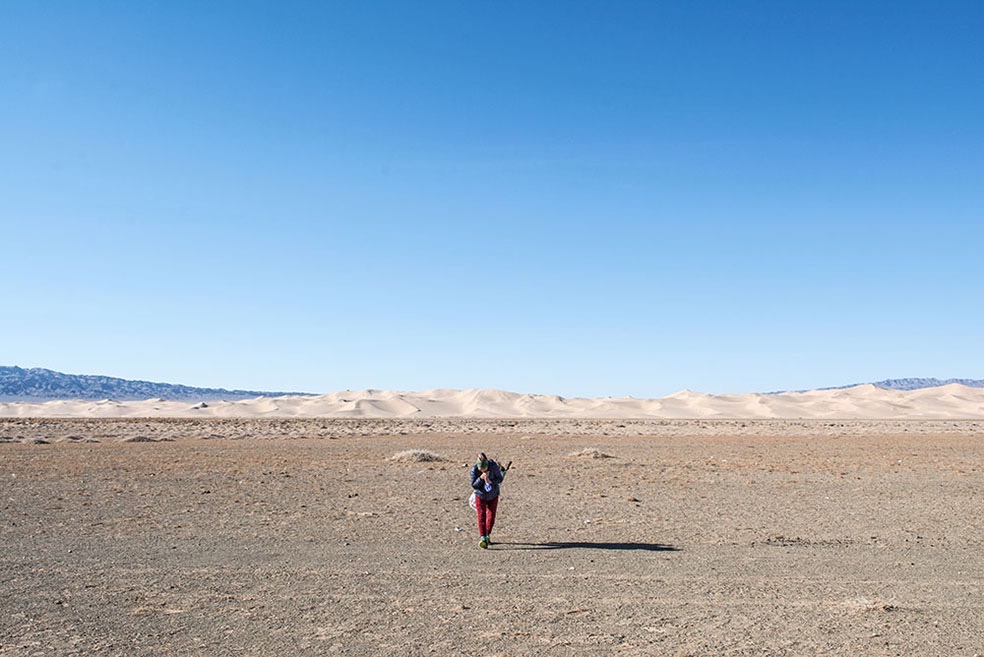
Mongolia, Gobi Desert, a woman carries Saxaul dry shrubs on her shoulders. The precious timber obtained from this desert plant is used by the desert nomads to heat their Gher. © Michele Martinelli
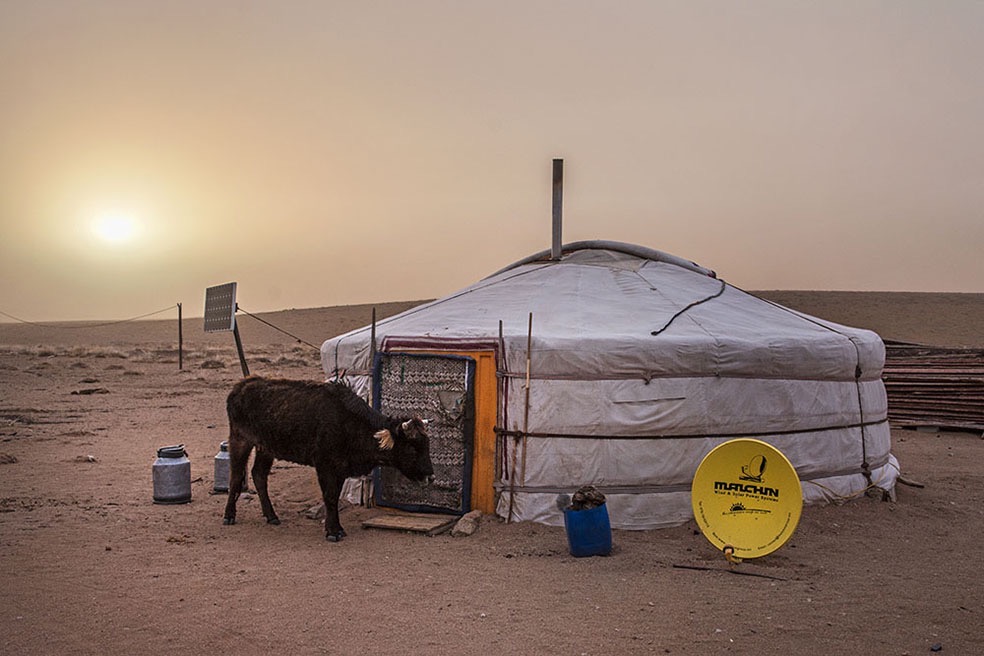
La Gher is the typical home where the nomads of Mongolia live. The structure, completely disassembled and transportable, is made up of several layers of felt and waterproof leathers supported by a wooden structure. Inside are all the assets of the family, while outside there are small solar panels suitable to recharge some batteries useful for the operation of small appliances. © Michele Martinelli
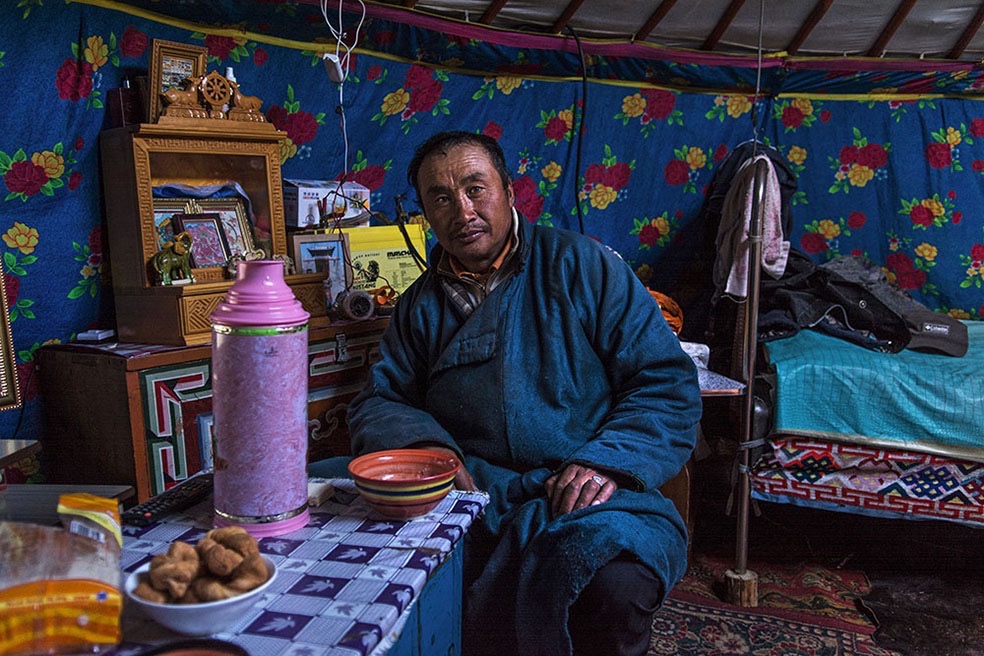
A Nomad inside his Gher. © Michele Martinelli

Inside the Gher family each has a sort of showcase with several photographs depicting their ancestors and more recent moments of life, so as to form a sort of mosaic of family history. © Michele Martinelli
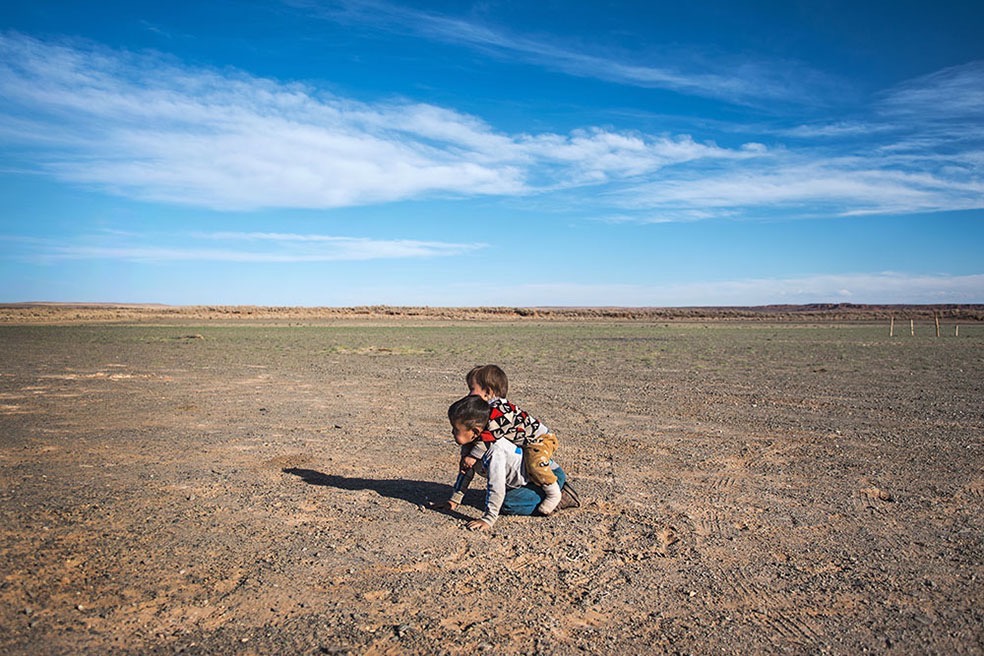
Two children play horseback riding, in Mongolian nomadic culture the horse is at the base of everything and you have children being taught right away to ride a horse. © Michele Martinelli
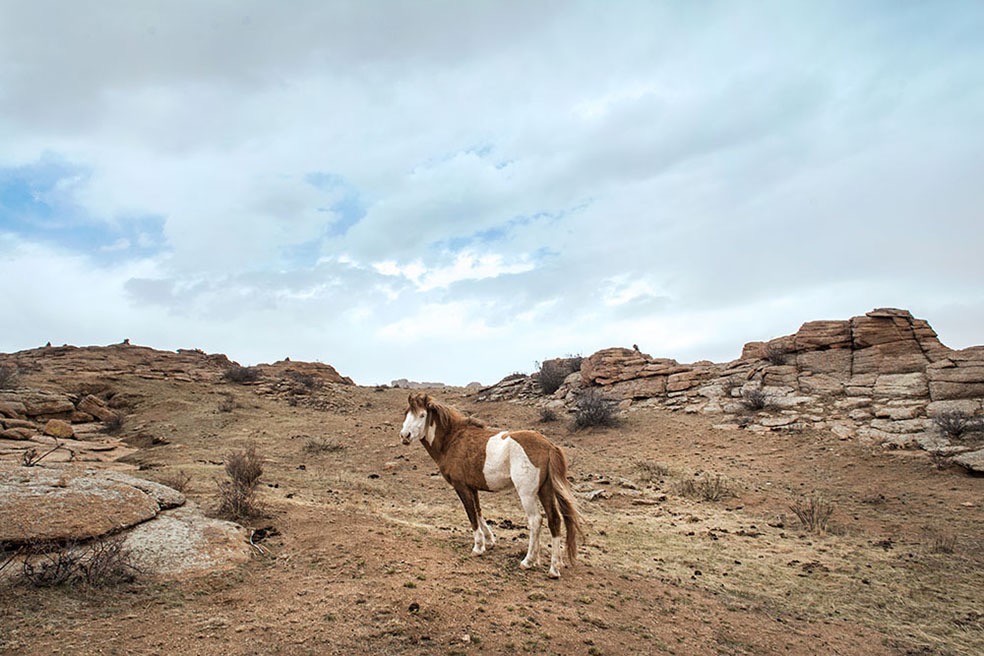
Small, but robust and frugal The horse is at the base of the nomadic culture of Mongolia. © Michele Martinelli
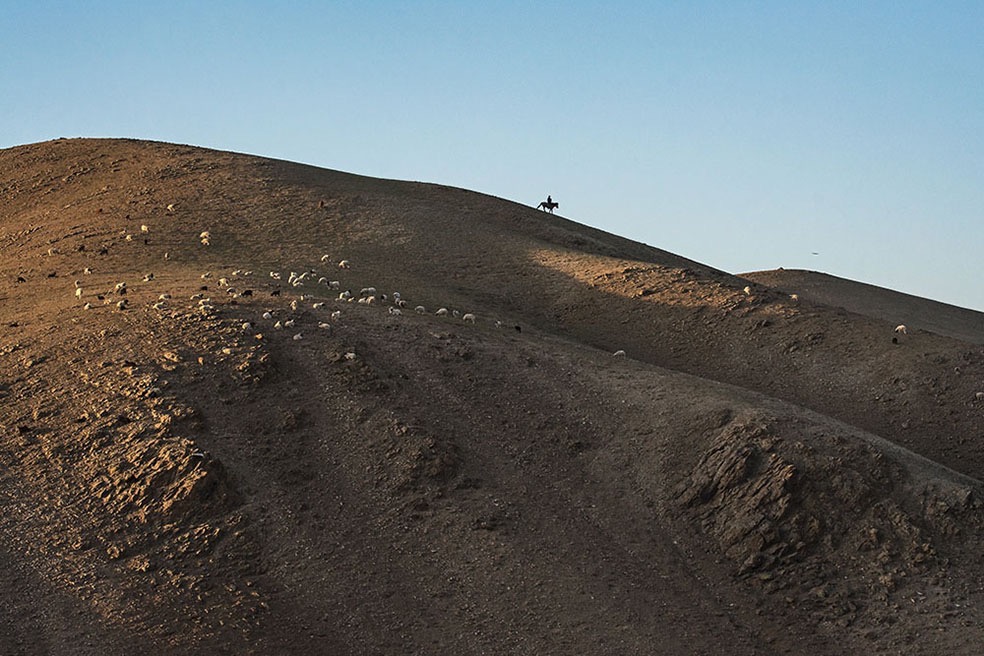
In the light of the sunset a nomad riding his horse leads his flock made up of sheep and goats. © Michele Martinelli
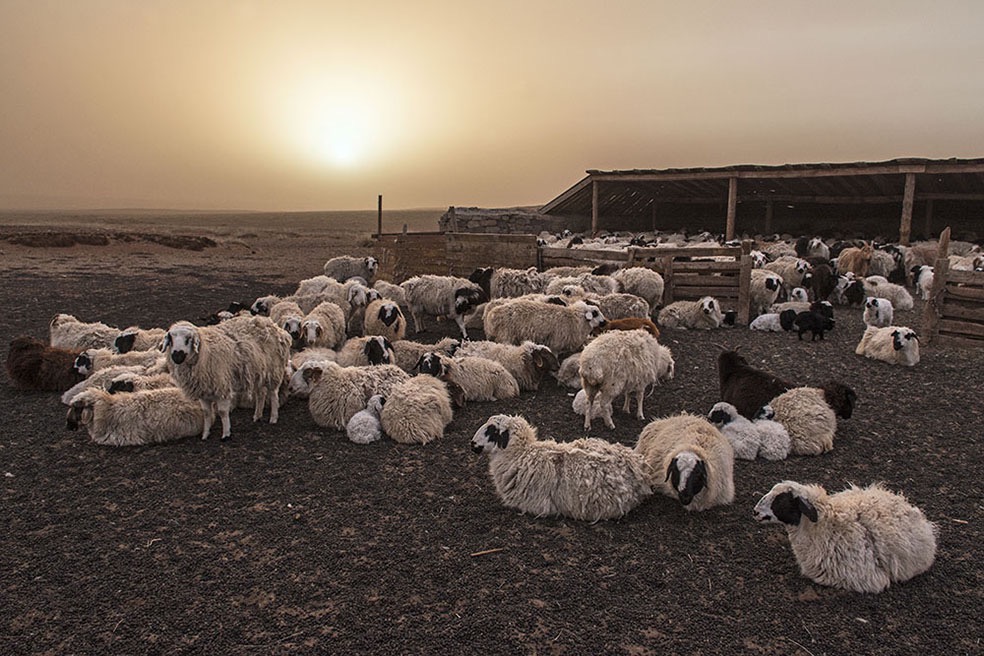
A flock of goats and sheep is gathered near the fence of a nomad camp. Mongolian nomads deal mainly with sheep farming, raising goats, sheep, yaks and camels. © Michele Martinelli
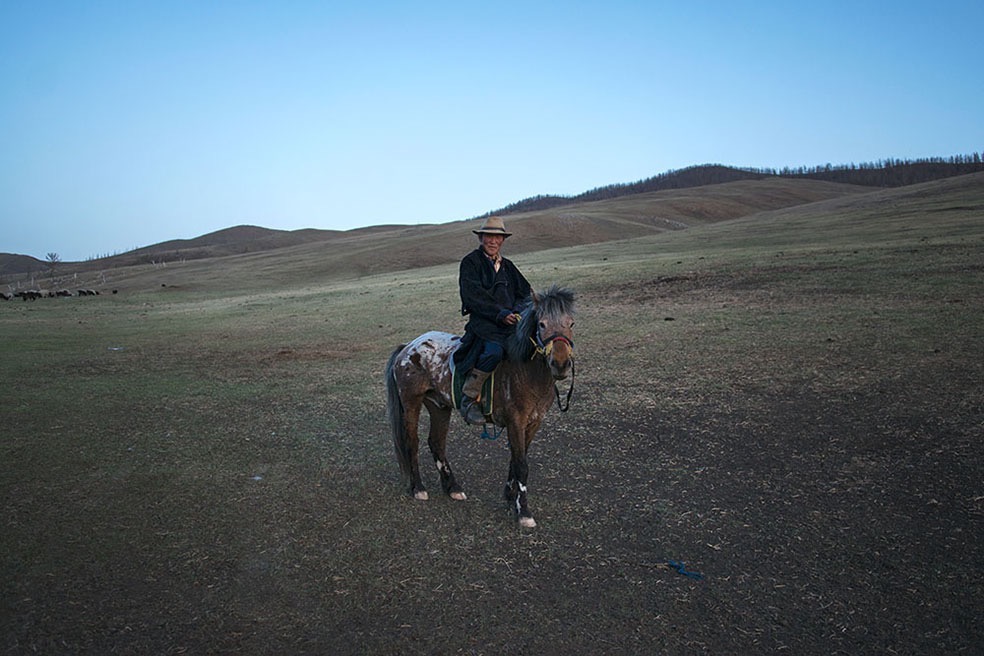
A man shows himself proudly in the saddle his horse. © Michele Martinelli
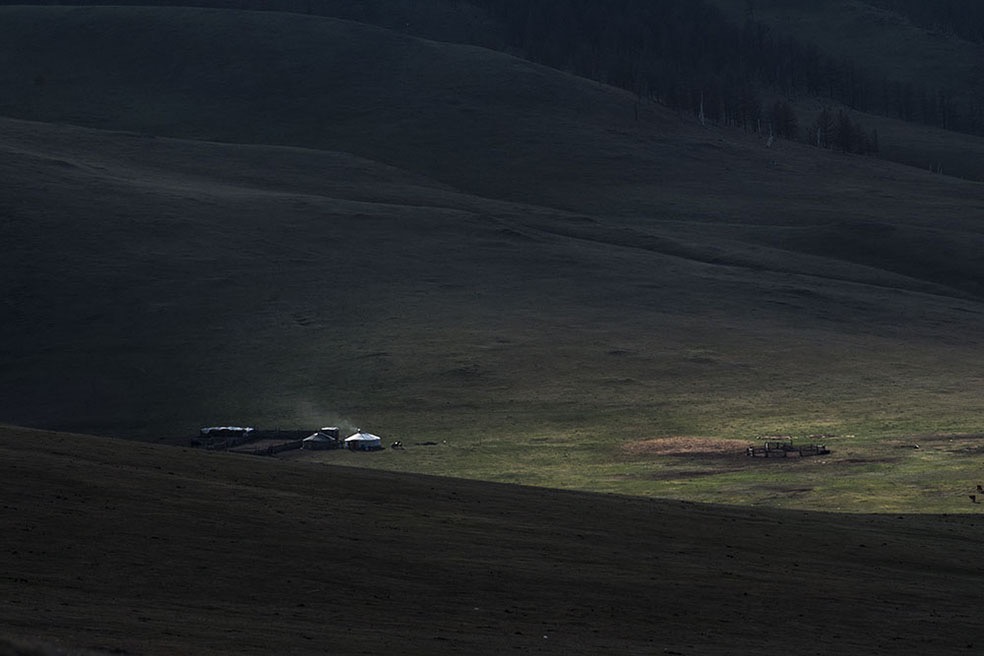
In a Mongolian steppe valley, illuminated by a timid ray of light, appears a Gher, a typical dwelling place of nomadic Mongolian people. © Michele Martinelli
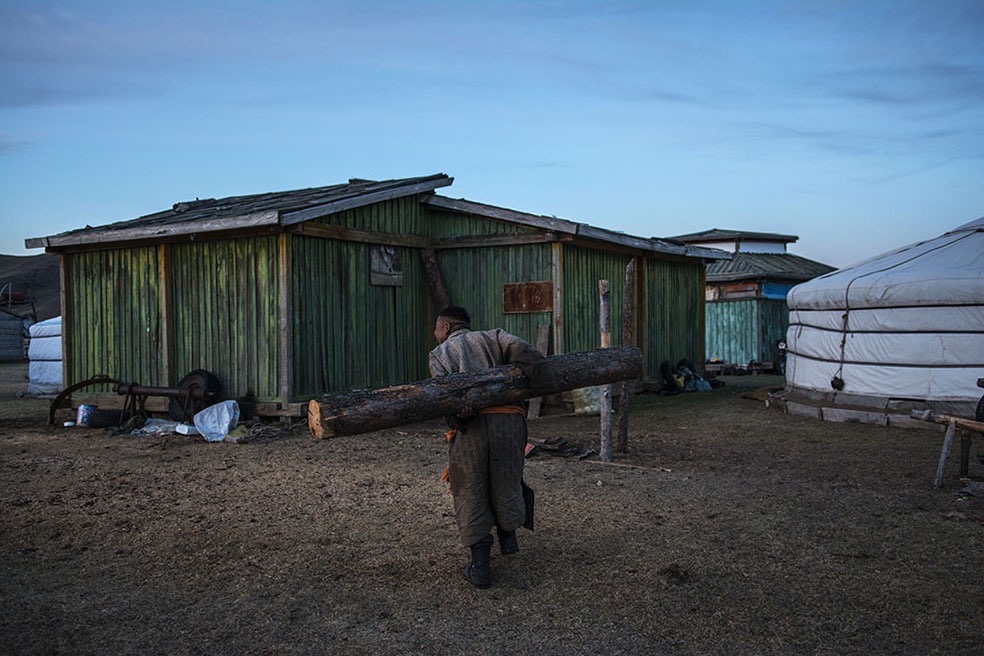
In the cold Mongolian steppe there are numerous coniferous woods, the camps are often mounted in their vicinity. Employed in multiple forms Timber is a fundamental resource for those who live in these areas. © Michele Martinelli
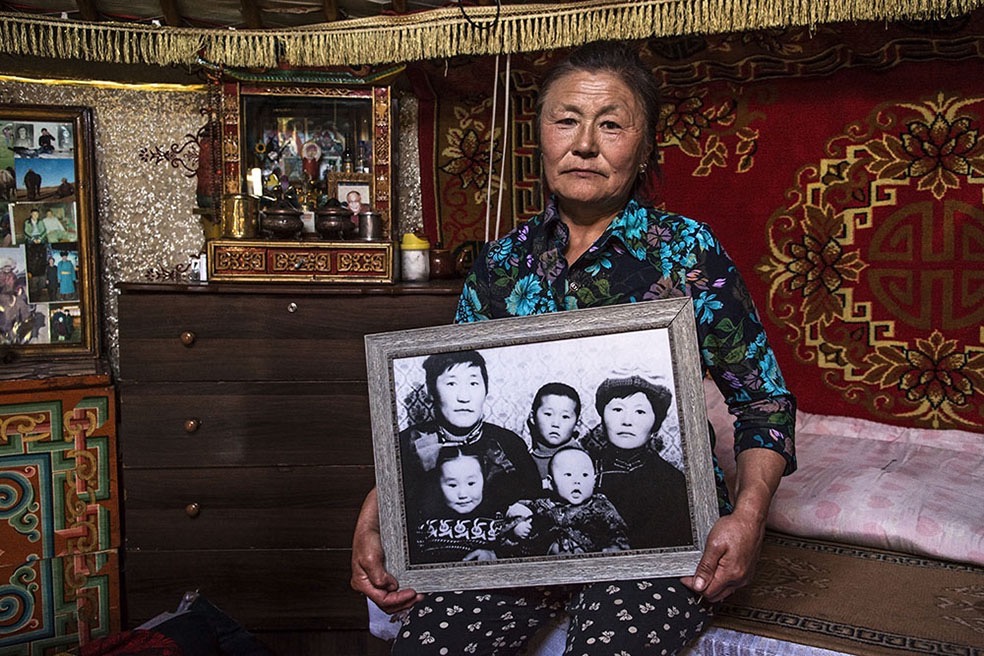
A woman inside her own Gher shows an old picture of her family. Nowadays children have abandoned steppe and nomadic life to look for luck in the city, Ulan Bator capital. © Michele Martinelli
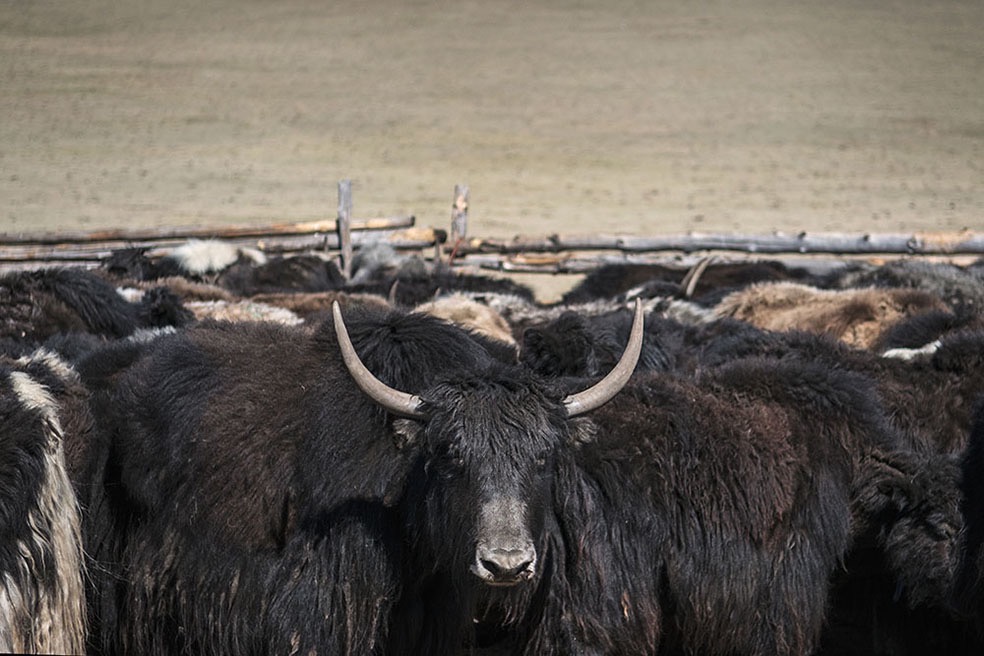
The Yaks are an important resource for the nomads, being versatile animals that lend themselves to various uses: beasts of burden, transport animals, traction force in agriculture; they also supply milk, meat, wool and furs. Their physical structure is extremely adapted to a mountainous, impervious and cold environment. © Michele Martinelli
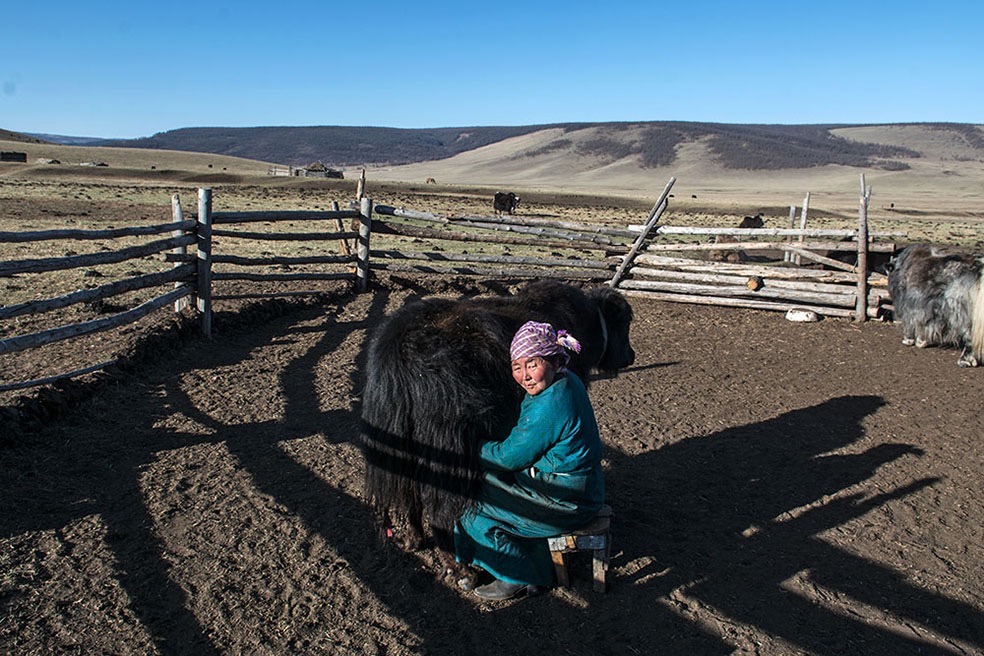
In the early morning a woman is dedicated to milking the Yaks. © Michele Martinelli
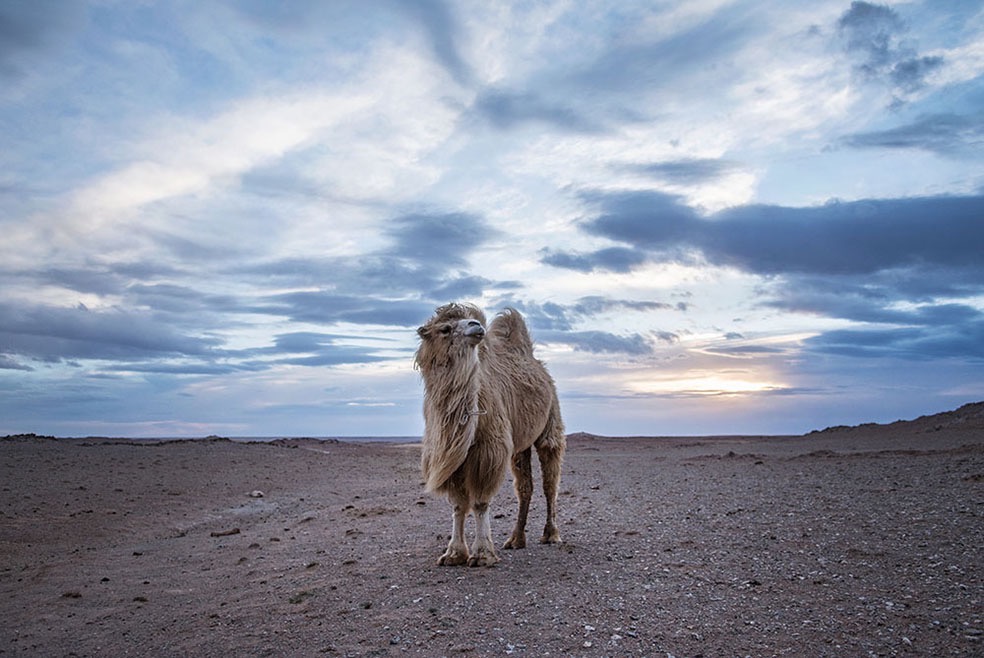
Elegant, the Asian camel takes the place of the yak in the desert and semi-desert regions of Mongolia, used by the nomads for meat, fat, milk, wool and as a transport animal. © Michele Martinelli
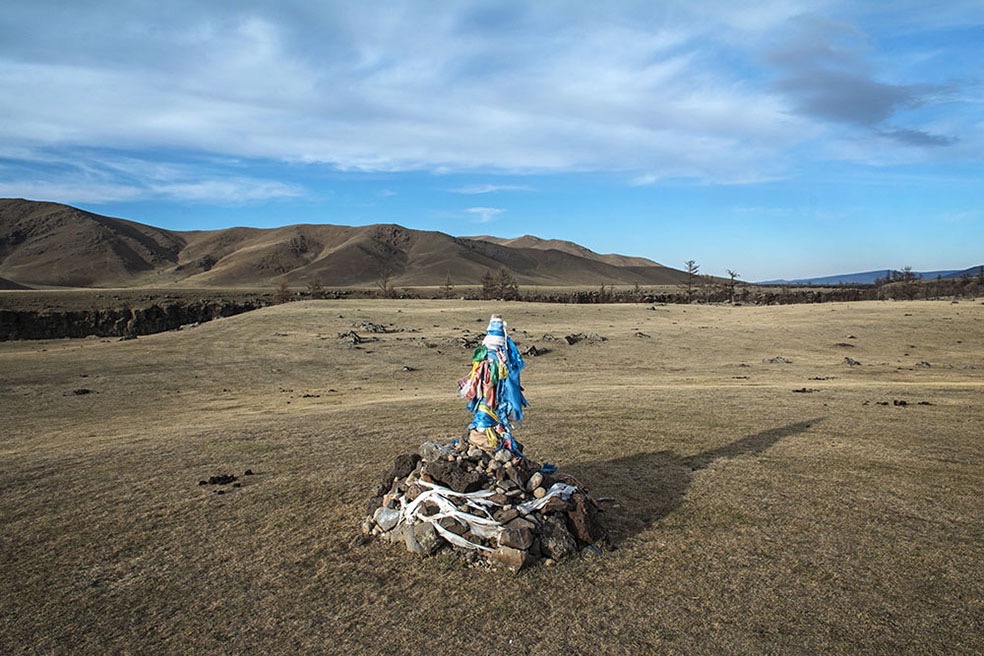
An ovoo, which literally means “heap of stones”, is usually a pile of stone or wood that is frequently encountered in Mongolia. They are above all shamanic places of worship, but they are often also points of reference. When traveling, there is the custom of stopping and circling around the egg three times, clockwise, in order to have a safer path. Usually, stones are taken from the ground and added to the pile along with blue ceremonial scarves symbol of the sky and the god Tengri. © Michele Martinelli
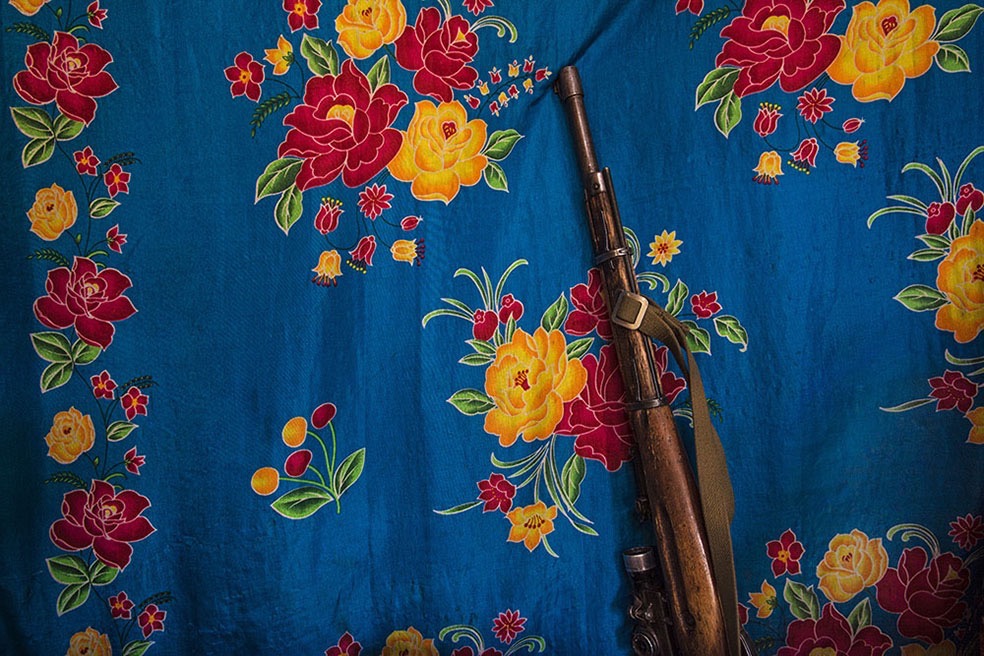
A rifle is leaning against a wall inside a Gher. Weapons are mainly used by nomads to defend against any Wolves attacks on livestock, an event that is far from rare. © Michele Martinelli
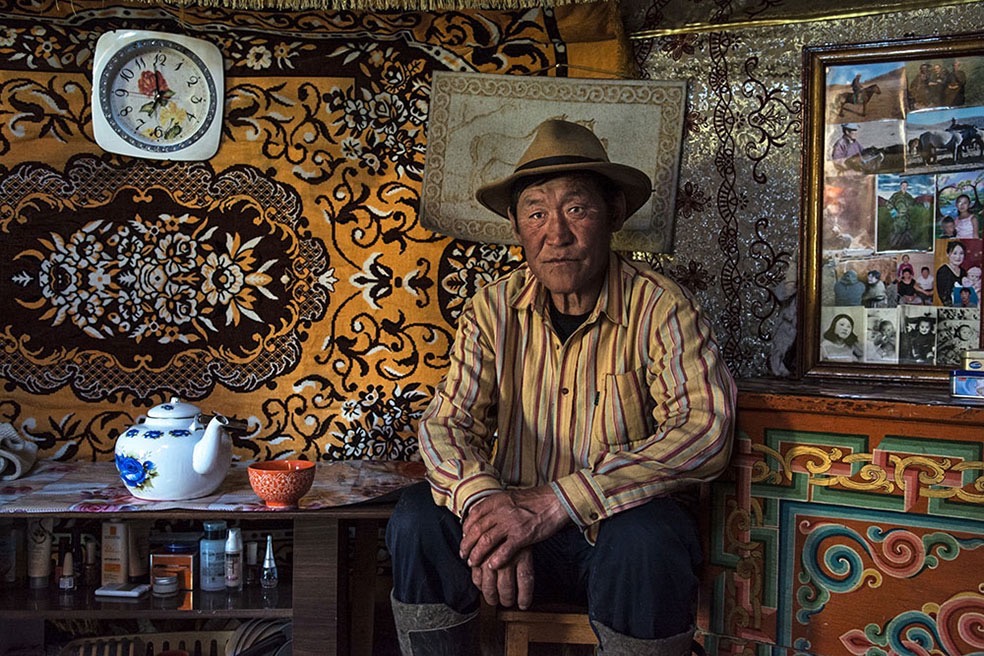
A man within his own Gher just finished drinking the airag, the typical Mongolian drink made with fermented milk. © Michele Martinelli
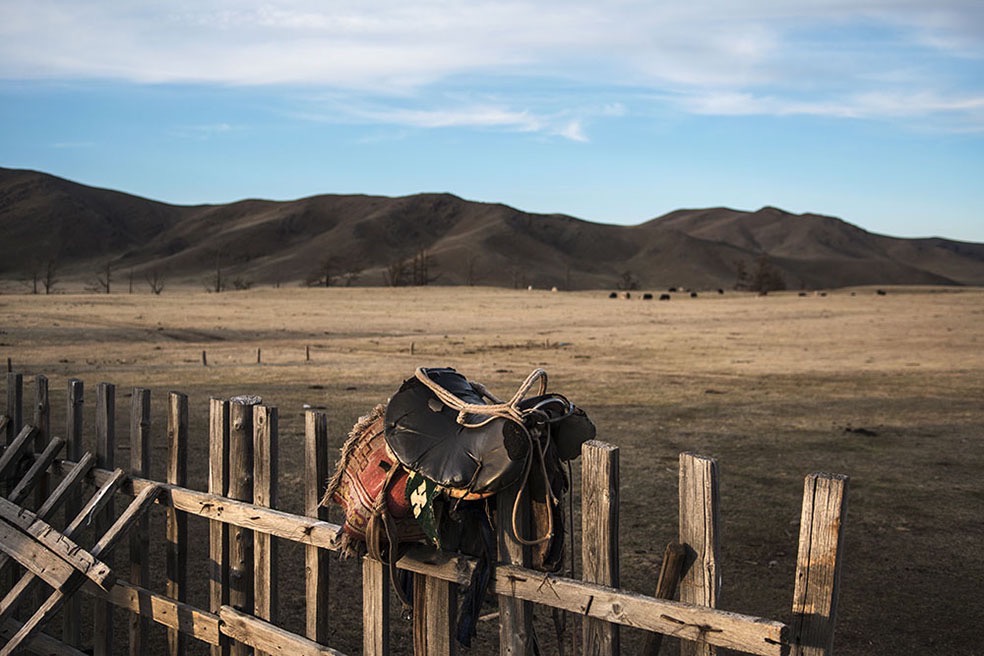
A typical Mongolian saddle is resting on a fence ready to be used … © Michele Martinelli
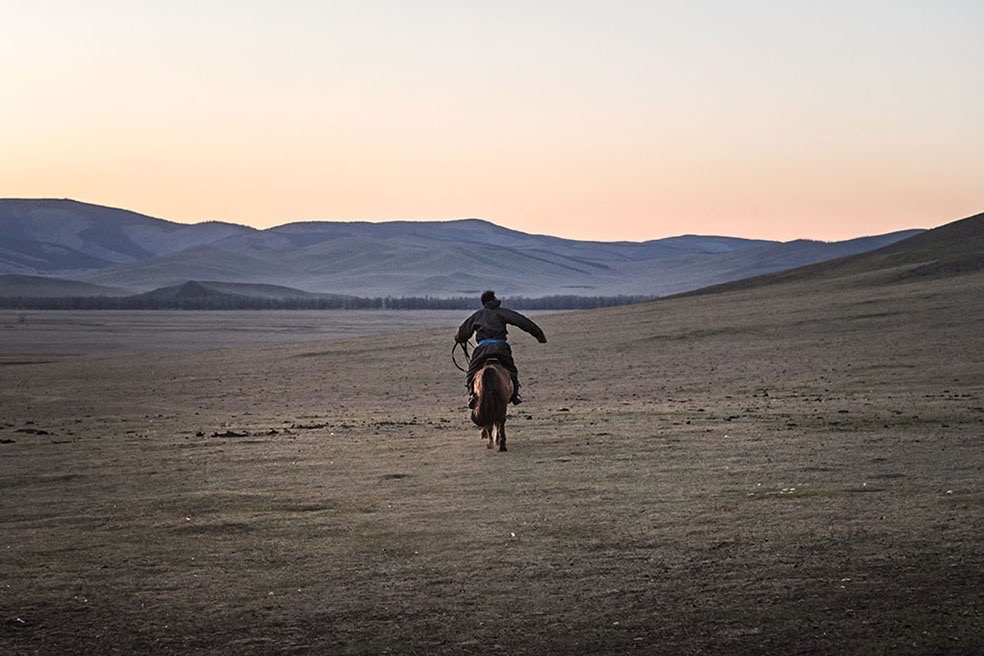
Mongolian nomads are skillful knights and are regarded as direct descendants of Emperor Genghis Khan who rode across the asia creating his vast and glorious empire. © Michele Martinelli

